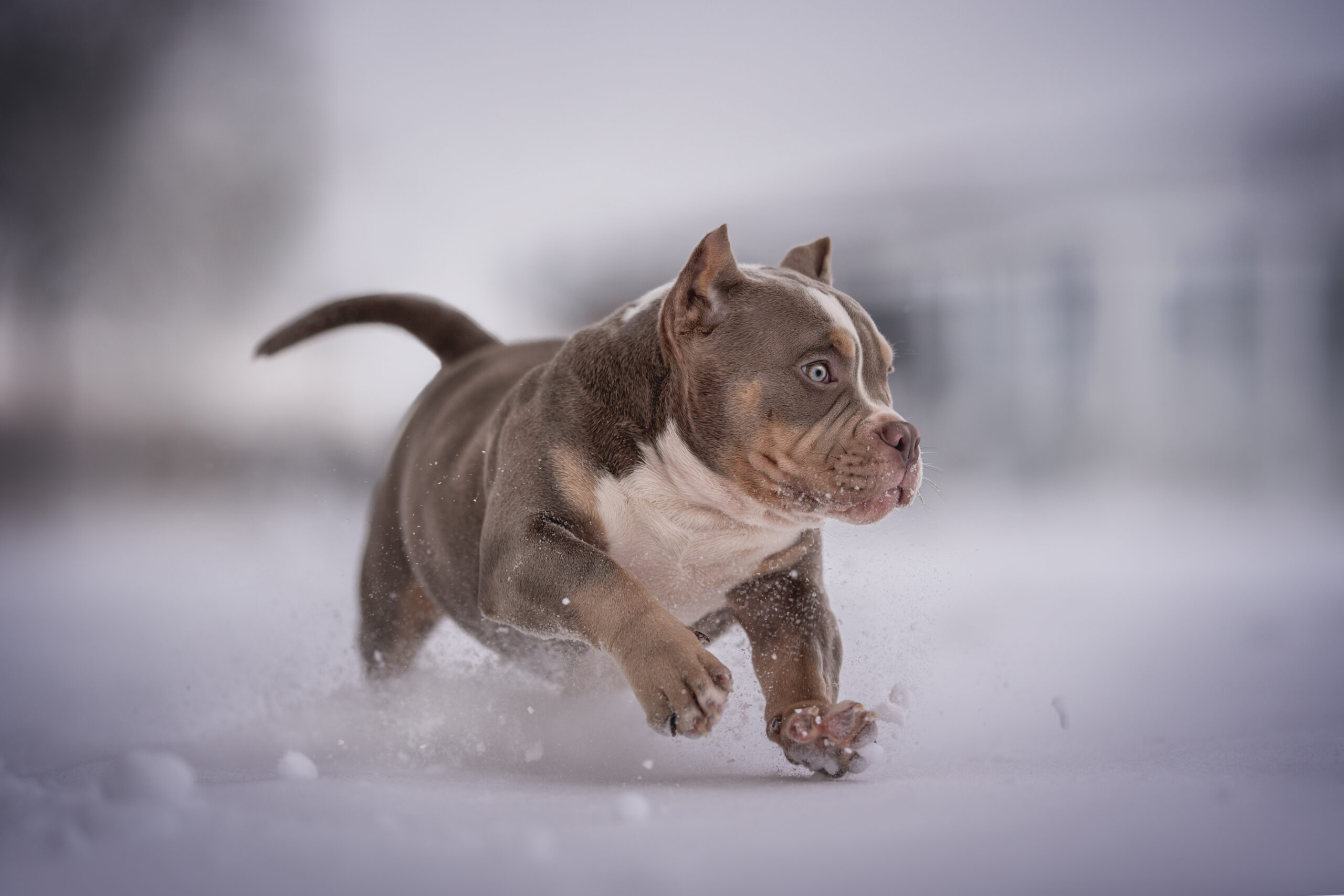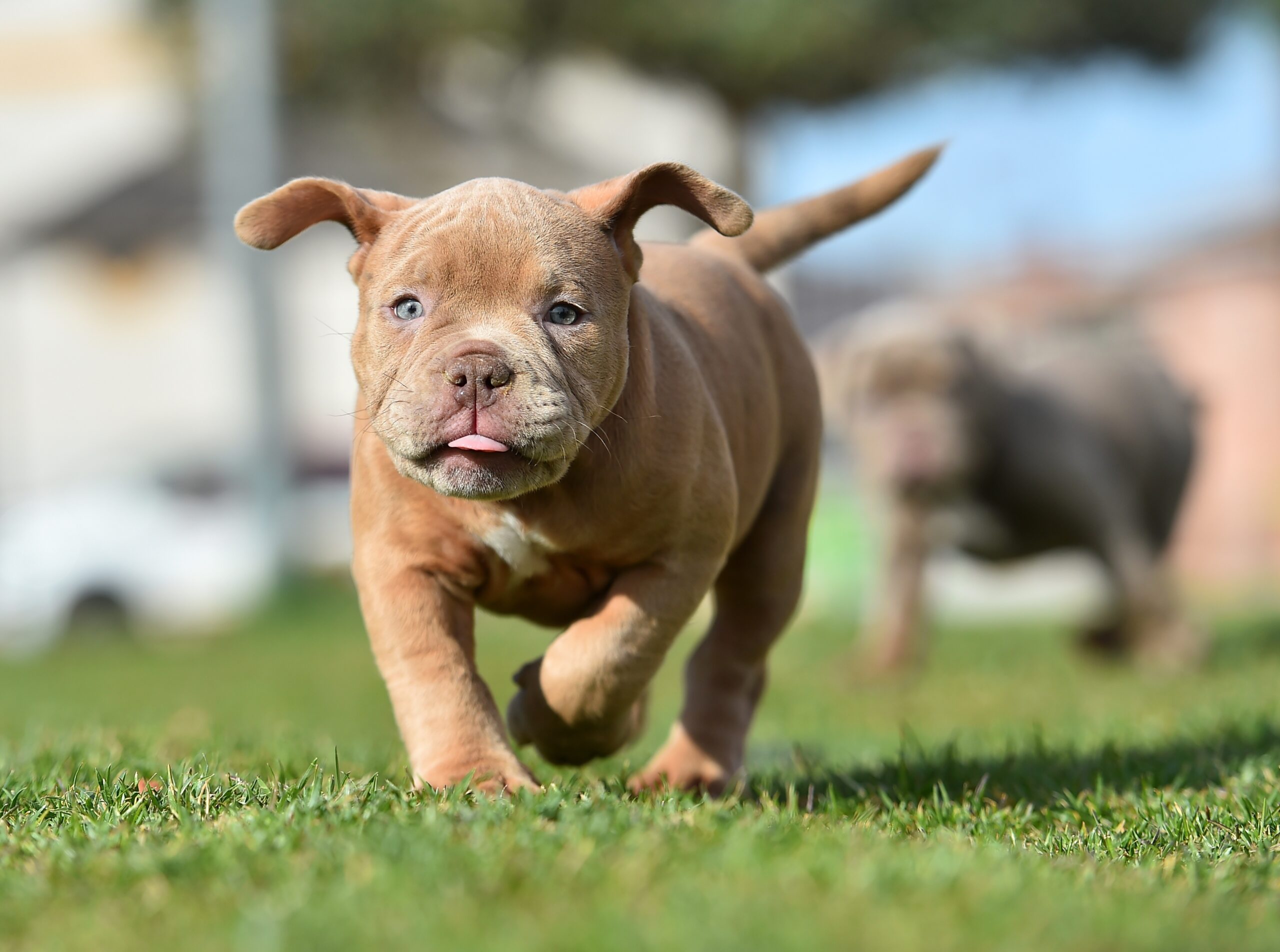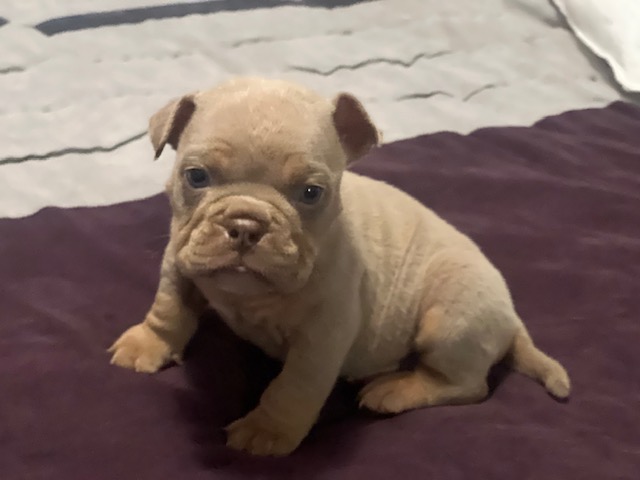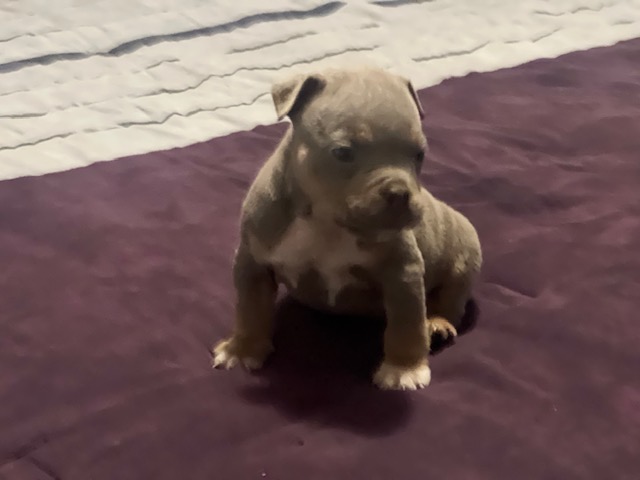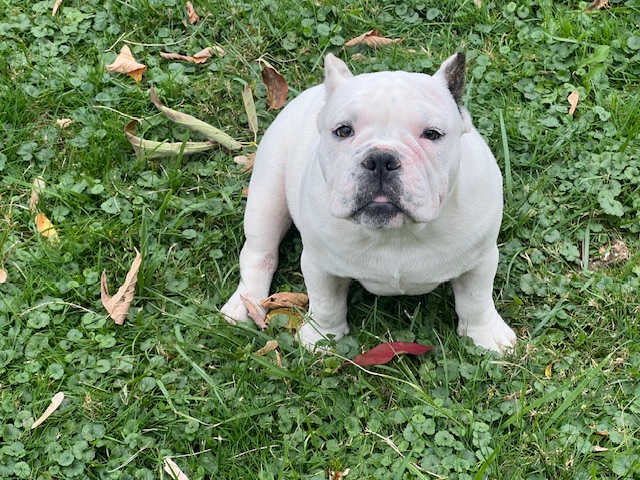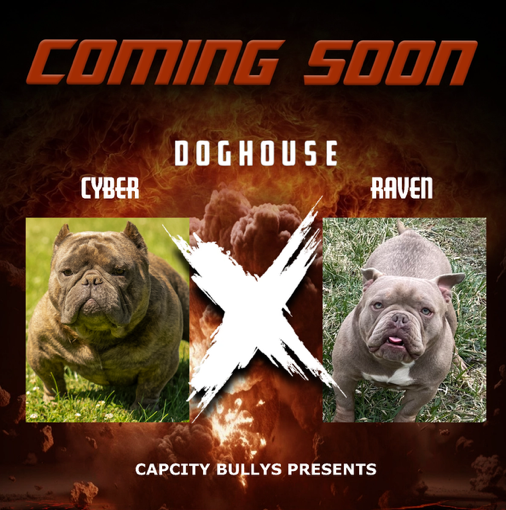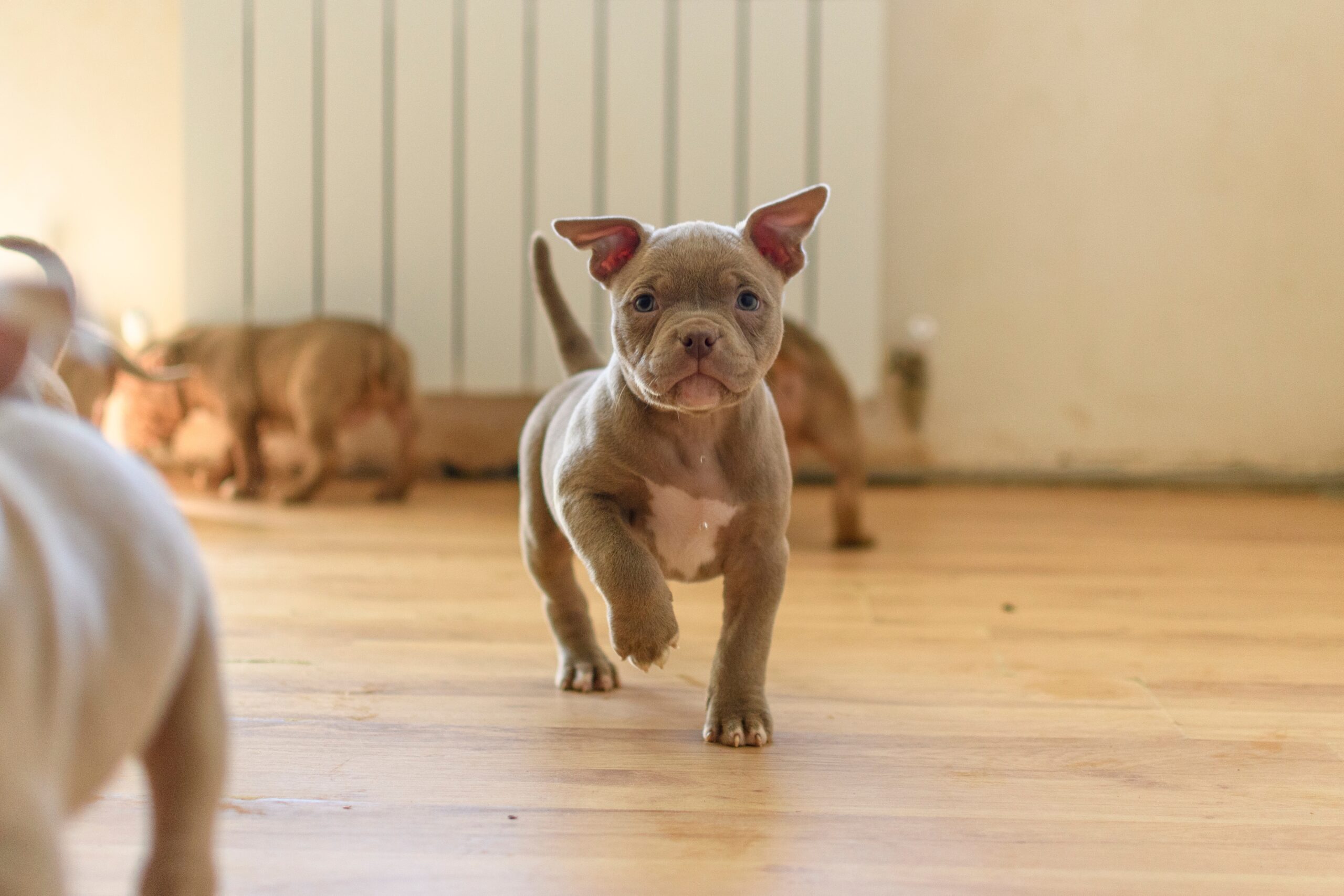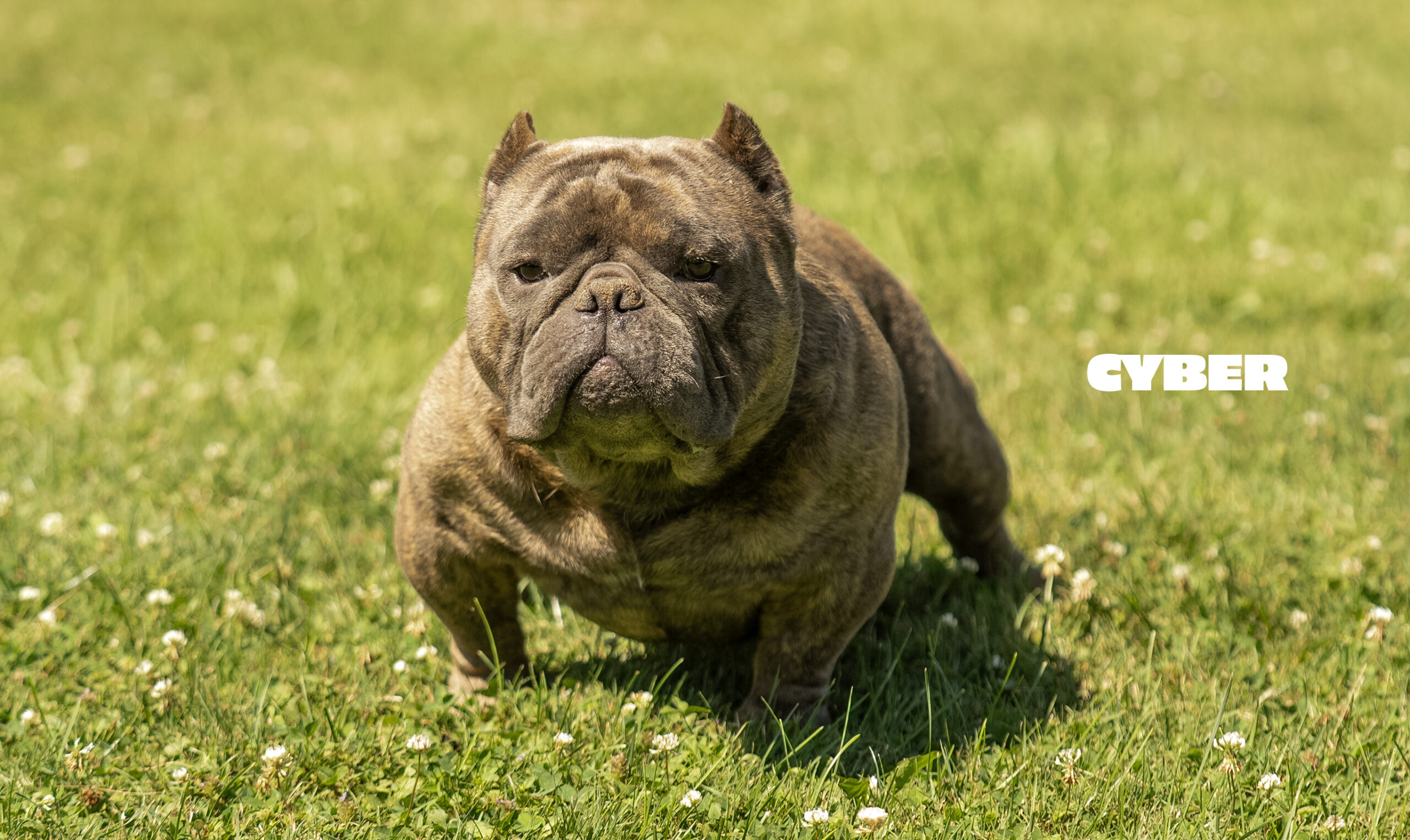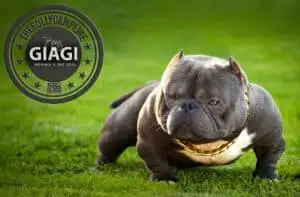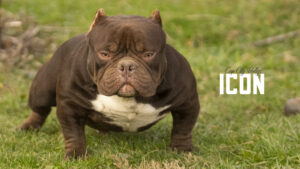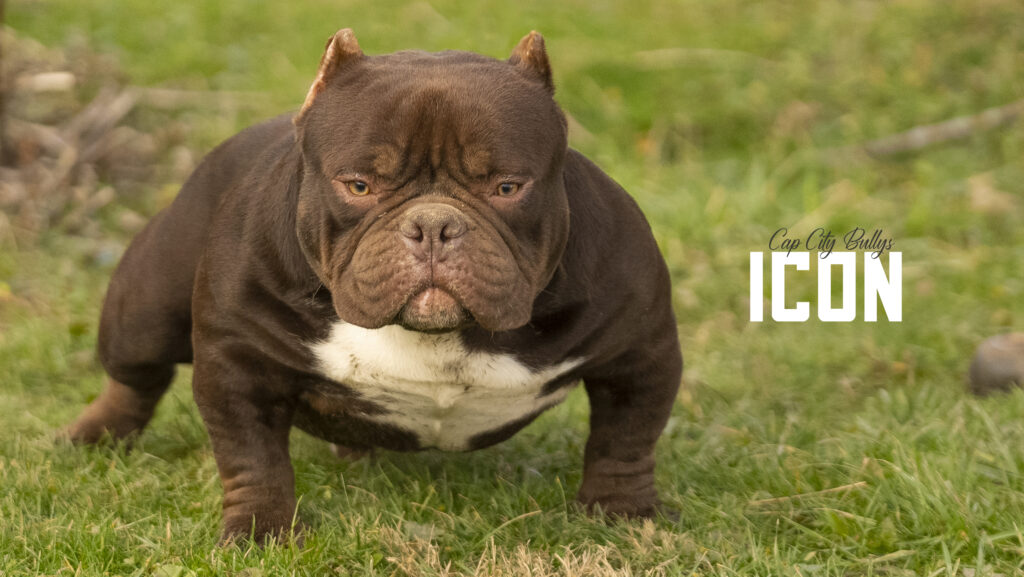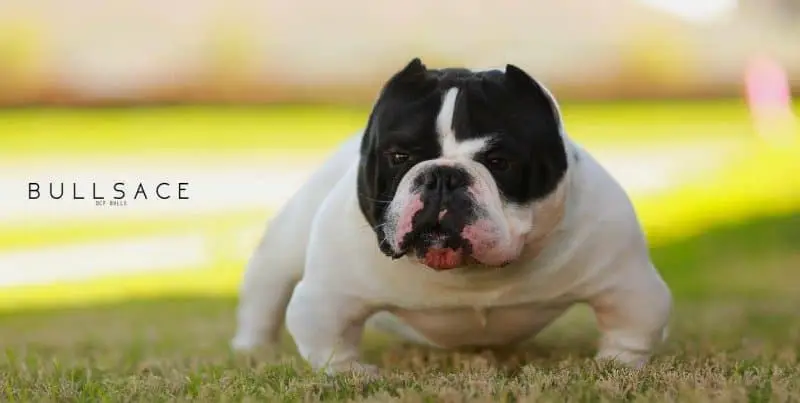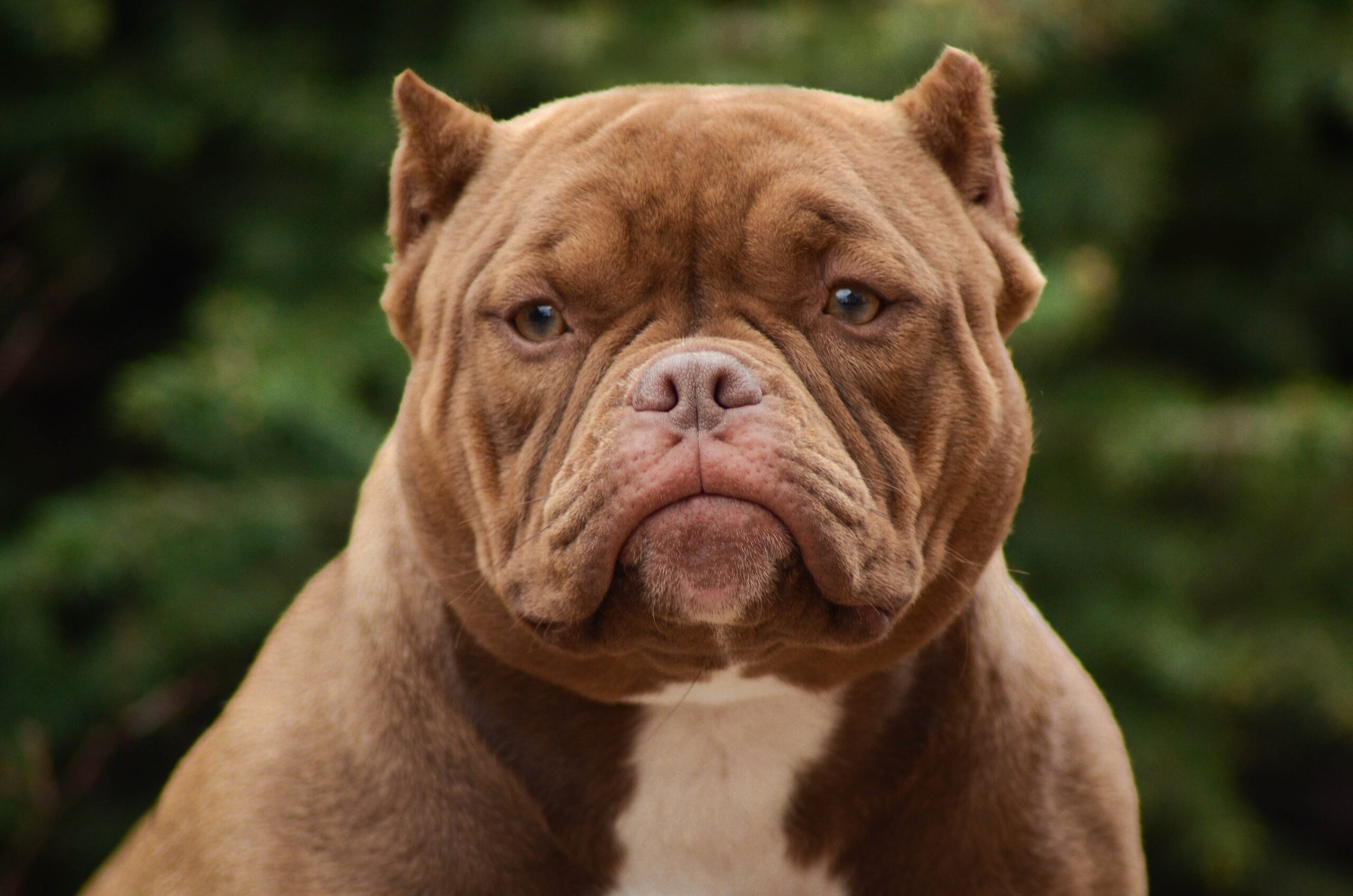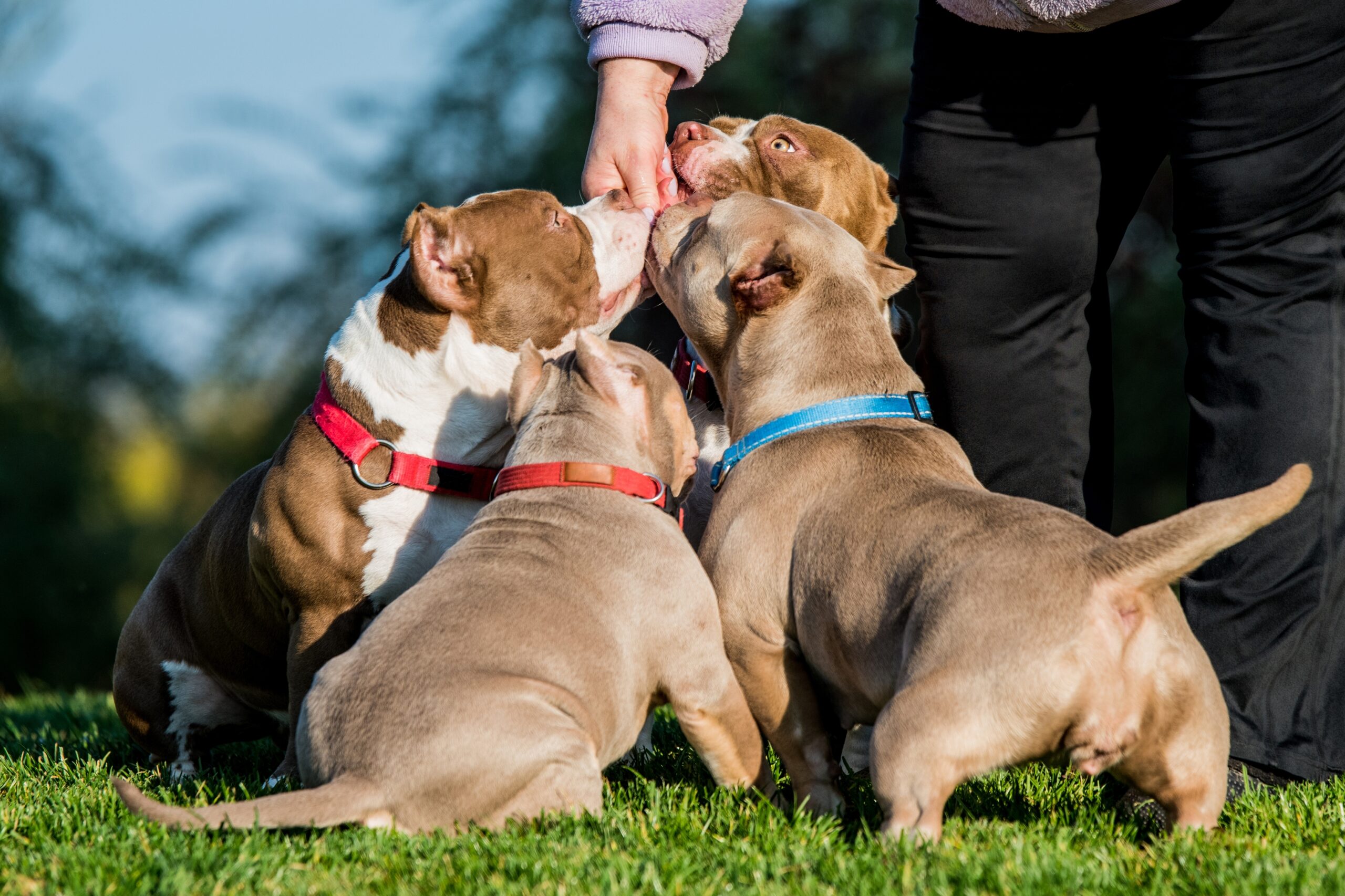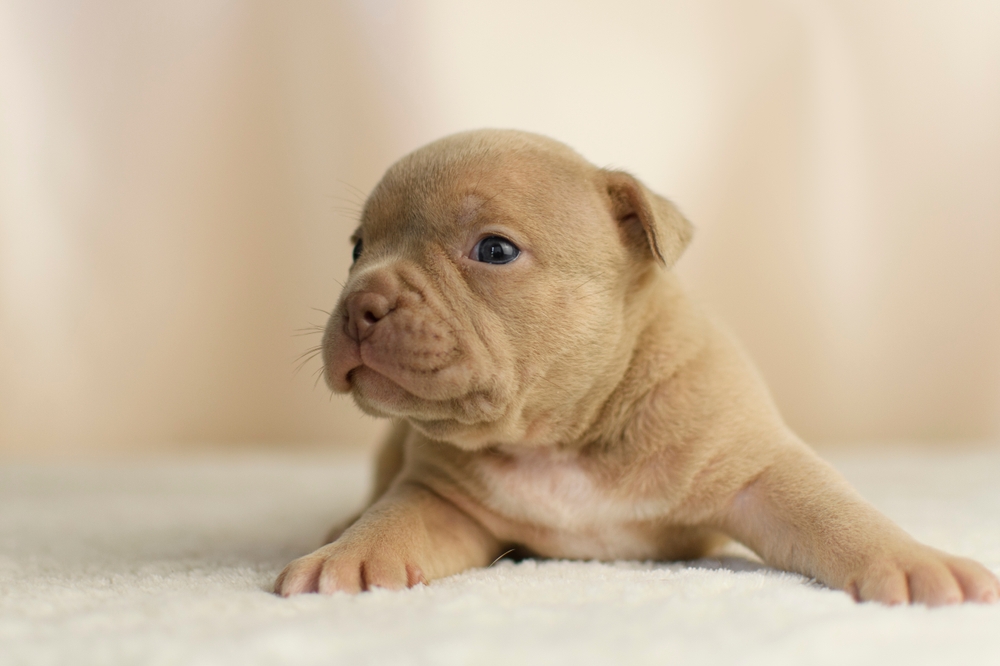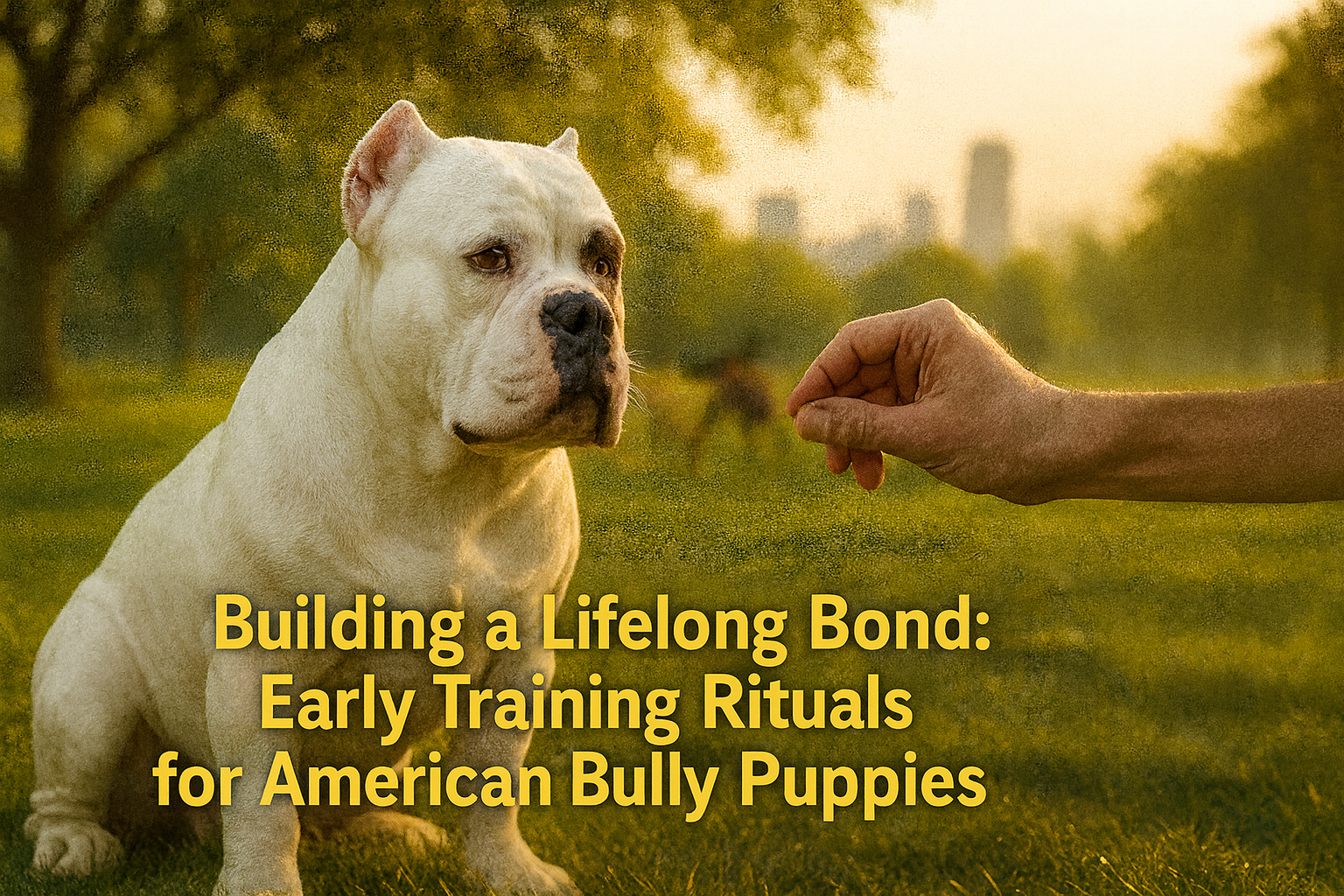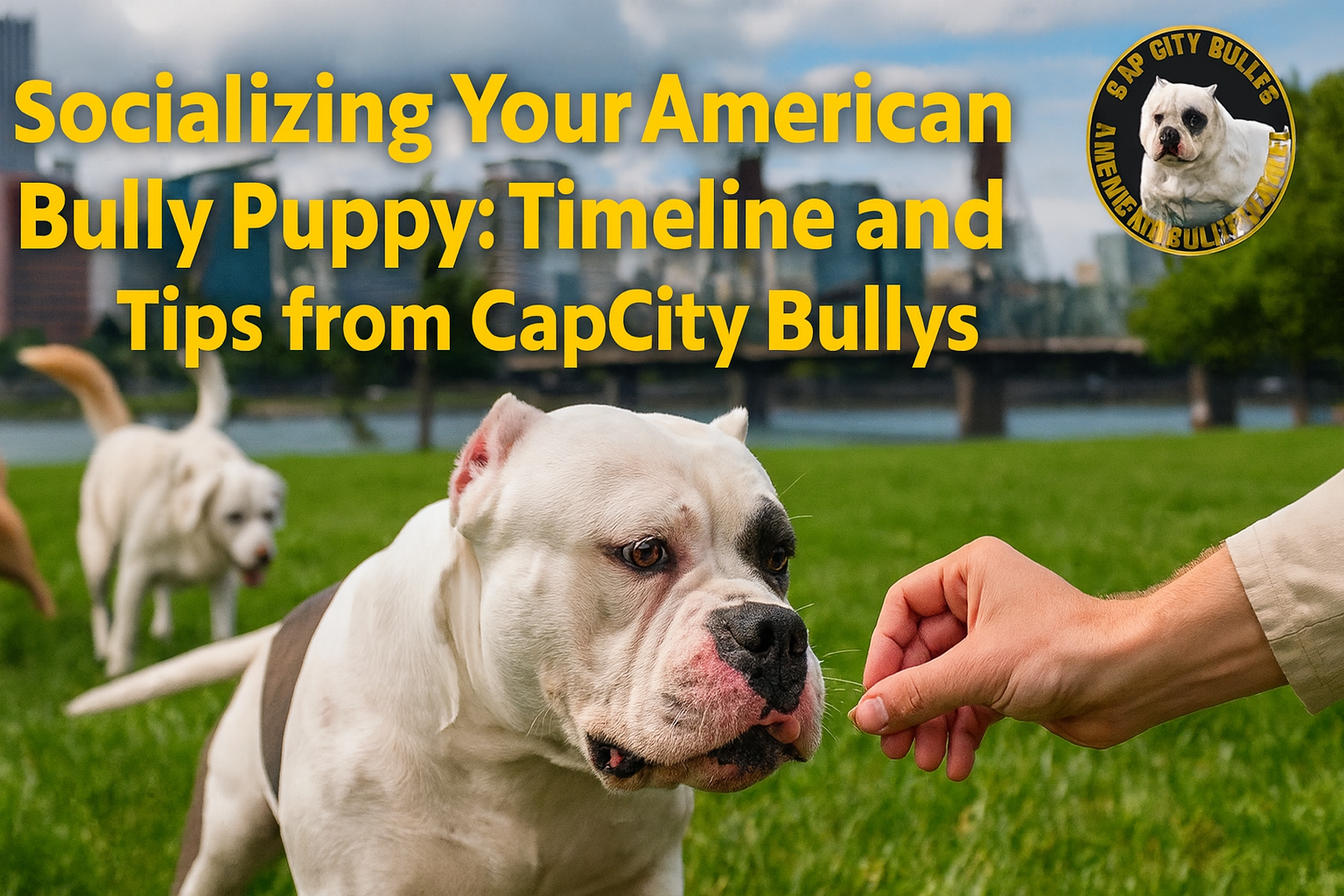Complete Seasonal Care Guide by Capcity Bullys
American Bullies are powerful, loyal, and affectionate companions—but because of their short coats, muscular builds, and unique respiratory structure, seasonal care is extremely important. At Capcity Bullys, we raise American Bullies year-round in Pennsylvania, so we understand firsthand how winter cold and summer heat can affect these dogs.
Whether you own a Micro Bully, Pocket Bully, Standard American Bully, or Classic, this complete guide will walk you through how to properly care for your American Bully in both winter and summer, helping you keep your dog healthy, comfortable, and thriving all year long.
Understanding the American Bully’s Seasonal Needs
American Bullies are:
- Short-haired
- Muscular and compact
- Prone to overheating
- Sensitive to extreme cold
This means they do not regulate temperature as efficiently as long-haired breeds. Both cold weather and extreme heat can quickly become dangerous without proper care.
✅ WINTER CARE FOR YOUR AMERICAN BULLY
Winter presents several challenges for American Bullies:
- Cold sensitivity
- Dry skin
- Joint stiffness
- Paw injuries from salt and ice
- Reduced activity
Let’s break it down.
1. Keep Your American Bully Warm Outdoors
American Bullies should never be left outside for long in cold weather. Their short coats provide very little insulation.
✅ Winter Protection Tips:
- Use a dog sweater or winter jacket
- Avoid extended outdoor time below 40°F
- Never leave your Bully outside unattended
- Pay attention to shivering, stiff walking, or lifting paws
Micro Bullies and puppies are especially sensitive and should only go outside long enough for bathroom breaks during extreme cold.
2. Protect Their Paws From Ice & Salt
Winter sidewalks are full of:
- Ice
- Rock salt
- Chemical de-icers
These can burn paw pads, cause cracking, and lead to infections.
✅ Paw Safety Tips:
- Use dog booties during walks
- Wipe paws with a warm damp towel after every walk
- Apply paw balm to prevent drying and cracking
- Check between toes for redness or irritation
3. Adjust Winter Nutrition
Your American Bully may burn more calories in winter trying to stay warm—especially active dogs.
✅ Winter Feeding Tips:
- Maintain high-quality protein-based food
- Slightly increase calories for active dogs
- Add omega-3 supplements for coat and joint health
- Keep fresh water available at all times
Proper winter nutrition supports:
- Muscle maintenance
- Joint health
- Skin and coat protection
4. Prevent Dry Skin & Coat Issues
Cold air and indoor heating dry out your Bully’s skin, causing:
- Itching
- Flaking
- Dull coat
✅ Skin Care Tips:
- Use oatmeal-based dog shampoo
- Limit baths to once every 4–6 weeks
- Add fish oil supplements
- Use a humidifier indoors if needed
5. Maintain Exercise During Winter
Even in cold weather, your Bully still needs:
- Mental stimulation
- Muscle conditioning
- Daily activity
✅ Safe Winter Exercise Ideas:
- Indoor tug games
- Treadmill walking (supervised)
- Short structured outdoor walks
- Puzzle toys and obedience training
Avoid intense outdoor exercise on icy ground to prevent joint injuries.
✅ SUMMER CARE FOR YOUR AMERICAN BULLY
Summer is the most dangerous season for American Bullies due to:
- Overheating risk
- Heatstroke vulnerability
- Paw burns
- Dehydration
American Bullies cannot cool themselves efficiently, making heat management critical.
1. Prevent Overheating & Heatstroke
Heatstroke can occur in minutes and is often fatal if not treated immediately.
✅ Signs of Heatstroke:
- Heavy panting
- Drooling
- Red gums
- Weakness or collapse
- Vomiting
✅ Summer Safety Rules:
- Never leave your Bully in a car — not even for 2 minutes
- Walk early morning or after sunset
- Avoid peak heat (11 AM – 6 PM)
- Always carry water
2. Hydration Is Critical
Dehydration leads directly to:
- Heat exhaustion
- Kidney strain
- Lethargy
✅ Hydration Tips:
- Multiple clean water bowls indoors and outdoors
- Add electrolyte dog supplements during extreme heat
- Encourage frequent drinking
- Add ice to water bowls on very hot days
3. Protect Paws From Hot Pavement
If you can’t hold your palm on the pavement for 5 seconds, it’s too hot for your dog’s paws.
Burned paws lead to:
- Blisters
- Open wounds
- Infection
✅ Summer Paw Safety:
- Walk on grass whenever possible
- Use booties on hot surfaces
- Walk early or late in the day
- Keep paw pads moisturized
4. Adjust Summer Feeding & Digestion
In summer, many American Bullies:
- Eat less
- Become more lethargic
- Digest slower
✅ Summer Feeding Tips:
- Feed during cooler hours (morning/night)
- Avoid heavy exercise right after meals
- Continue high-protein diet
- Avoid overfeeding
5. Cooling Methods for American Bullies
✅ Effective Cooling Tools:
- Cooling mats
- Kiddie pools
- Shaded outdoor areas
- Frozen dog treats
- Fans and AC indoors
Never use ice baths suddenly on overheated dogs — this can cause shock.
6. Parasite Prevention in Summer
Summer brings:
- Fleas
- Ticks
- Mosquitoes (heartworm risk)
✅ Protection Tips:
- Monthly flea & tick prevention
- Annual heartworm testing
- Mosquito control outdoors
- Regular skin inspections
✅ YEAR-ROUND HEALTH TIPS FOR AMERICAN BULLIES
No matter the season, your American Bully needs consistent care.
✅ Essential Year-Round Care:
- Regular vet visits
- Proper vaccination schedule
- Weight management
- Nail trimming
- Ear cleaning
- Dental care
✅ Special Considerations for Micro Bullies
Micro Bullies are:
- Shorter
- More compact
- More sensitive to temperature extremes
Extra Care Needed:
- Faster overheating
- Less cold tolerance
- Joint protection
- Indoor climate control
At Capcity Bullys, we closely monitor temperature for all our Micro Bullies to ensure optimal comfort.
✅ Common Seasonal Mistakes to Avoid
❌ Leaving your Bully outside in the cold
❌ Walking on hot pavement
❌ Letting your dog swim unsupervised
❌ Overfeeding during inactivity
❌ Skipping hydration monitoring
❌ Ignoring skin redness and irritation
✅ Why Proper Seasonal Care Matters
Proper seasonal care:
- Extends your Bully’s lifespan
- Protects joints & muscles
- Prevents emergency vet visits
- Maintains peak physical condition
- Improves temperament & energy
Your American Bully relies on you to regulate their environment.
✅ Capcity Bullys’ Commitment to Year-Round Health
At Capcity Bullys, we don’t just breed elite American Bullies — we raise them with:
- Proper seasonal conditioning
- Indoor climate control
- Balanced nutrition
- Socialized environments
- Health-first care standards
Our puppies are raised with attention to:
- Structure development
- Immune strength
- Skin & coat health
- Temperature management
✅ Final Verdict: How to Care for Your American Bully in Winter & Summer
American Bullies can thrive in any season when properly protected.
Winter Priorities:
✔ Warmth
✔ Paw protection
✔ Skin health
✔ Safe exercise
✔ Joint support
Summer Priorities:
✔ Heat prevention
✔ Hydration
✔ Pavement safety
✔ Cooling tools
✔ Parasite control
✅ Looking for a Healthy, Well-Cared-For American Bully?
Visit www.capcitybullys.com to explore:

